Abstract
Personal Digital Assistants (PDAs) offer many potential advantages to clinicians. A number of systems have begun to appear for all types of PDAs that allow for the recording and tracking of patient information. PDAs allow information to be both entered and accessed at the point of care. They also allow information entered away from a central repository to be added or "synced" with data through the use of a wireless or wired connection. Few systems, however, have been designed to work in the client/server environment. Even fewer have been designed as point of care additions to already existing enterprise systems. This paper describes the issues encountered in deploying such a system for use in the University of Washington Neonatal Intensive Care Unit (NICU). The lessons learned could be applied to other institutions that will seek to add handheld technology to information systems in the future.
Full text
PDF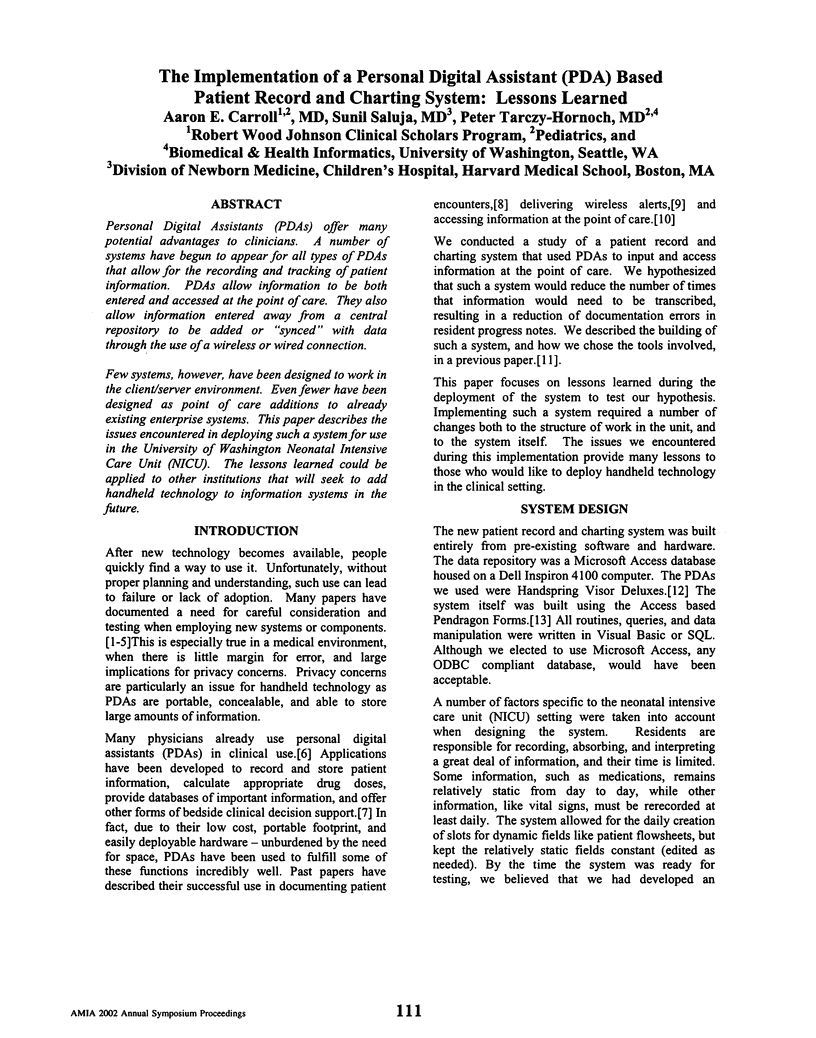
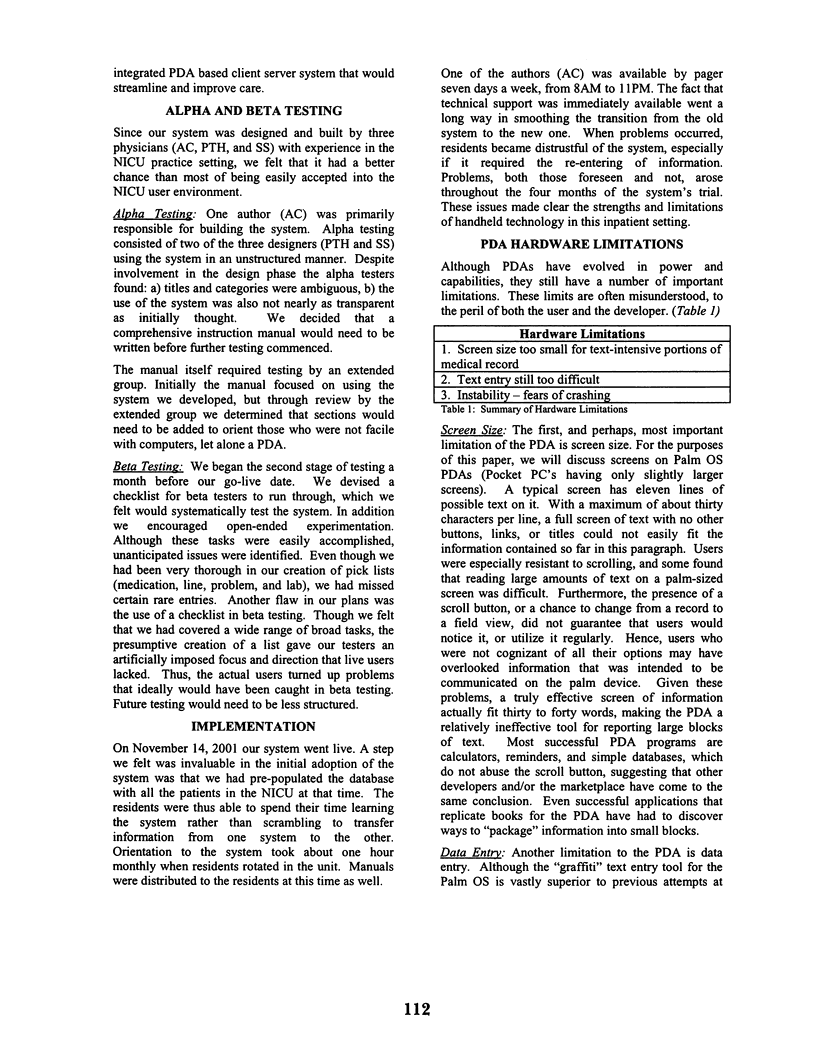
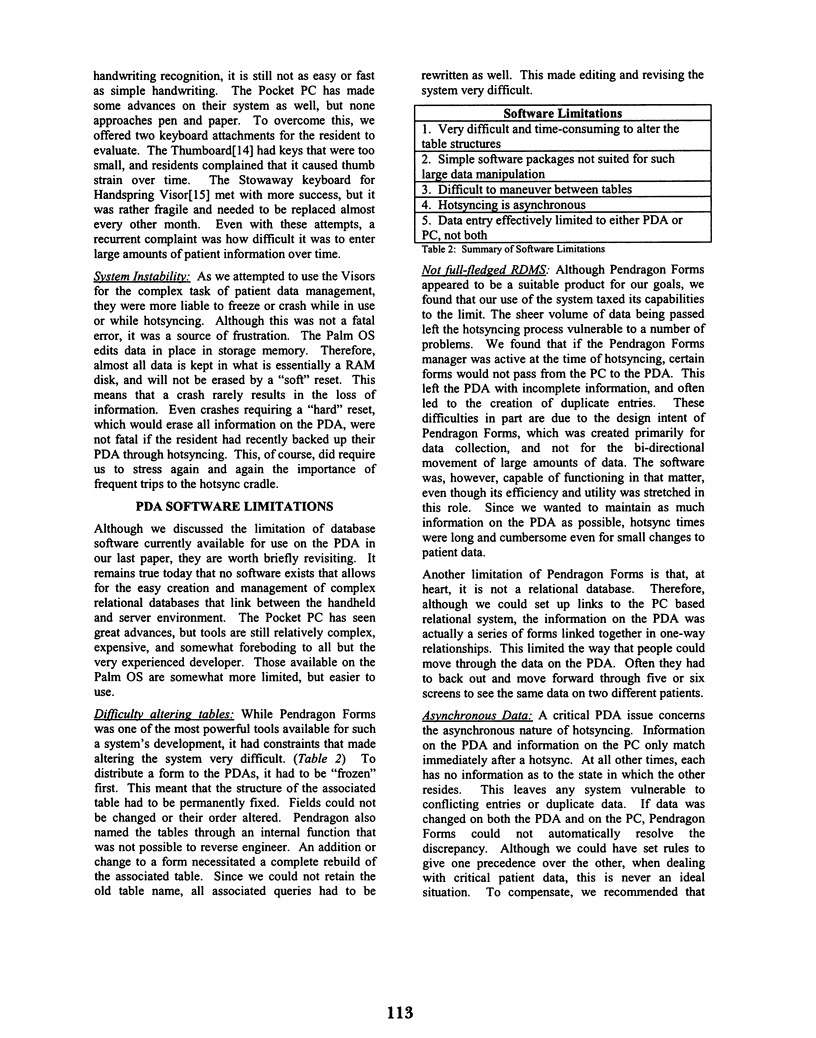
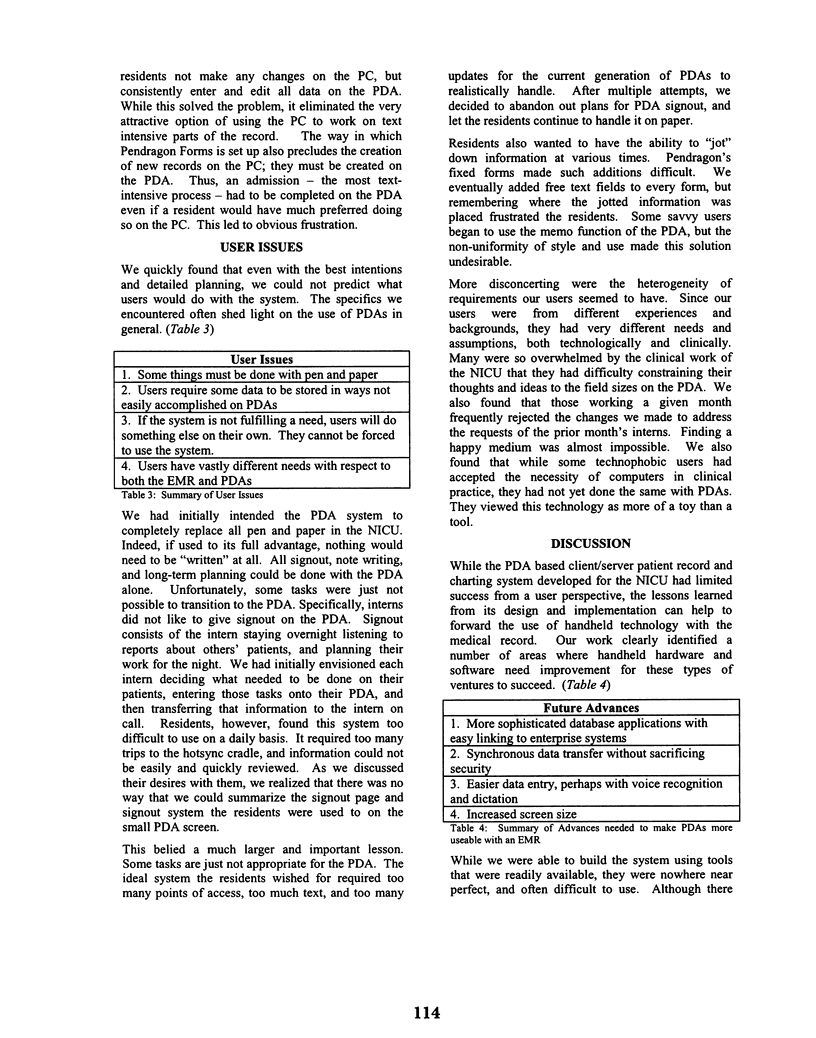
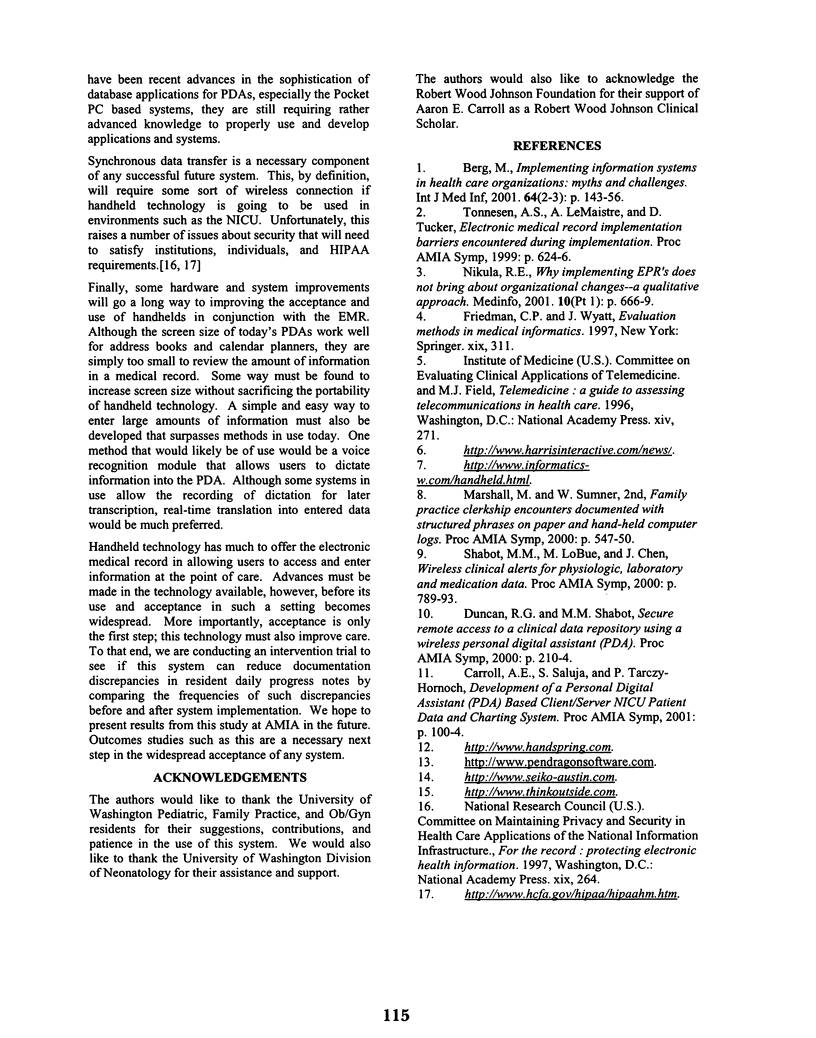
Selected References
These references are in PubMed. This may not be the complete list of references from this article.
- Berg M. Implementing information systems in health care organizations: myths and challenges. Int J Med Inform. 2001 Dec;64(2-3):143–156. doi: 10.1016/s1386-5056(01)00200-3. [DOI] [PubMed] [Google Scholar]
- Duncan R. G., Shabot M. M. Secure remote access to a clinical data repository using a wireless personal digital assistant (PDA). Proc AMIA Symp. 2000:210–214. [PMC free article] [PubMed] [Google Scholar]
- Marshall M., Sumner W., 2nd Family practice clerkship encounters documented with structured phrases on paper and hand-held computer logs. Proc AMIA Symp. 2000:547–550. [PMC free article] [PubMed] [Google Scholar]
- Nikula R. E. Why implementing EPR's does not bring about organizational changes--a qualitative approach. Stud Health Technol Inform. 2001;84(Pt 1):666–669. [PubMed] [Google Scholar]
- Shabot M. M., LoBue M., Chen J. Wireless clinical alerts for physiologic, laboratory and medication data. Proc AMIA Symp. 2000:789–793. doi: 10.1109/hicss.2000.926784. [DOI] [PMC free article] [PubMed] [Google Scholar]
- Tonnesen A. S., LeMaistre A., Tucker D. Electronic medical record implementation barriers encountered during implementation. Proc AMIA Symp. 1999:624–626. [PMC free article] [PubMed] [Google Scholar]


